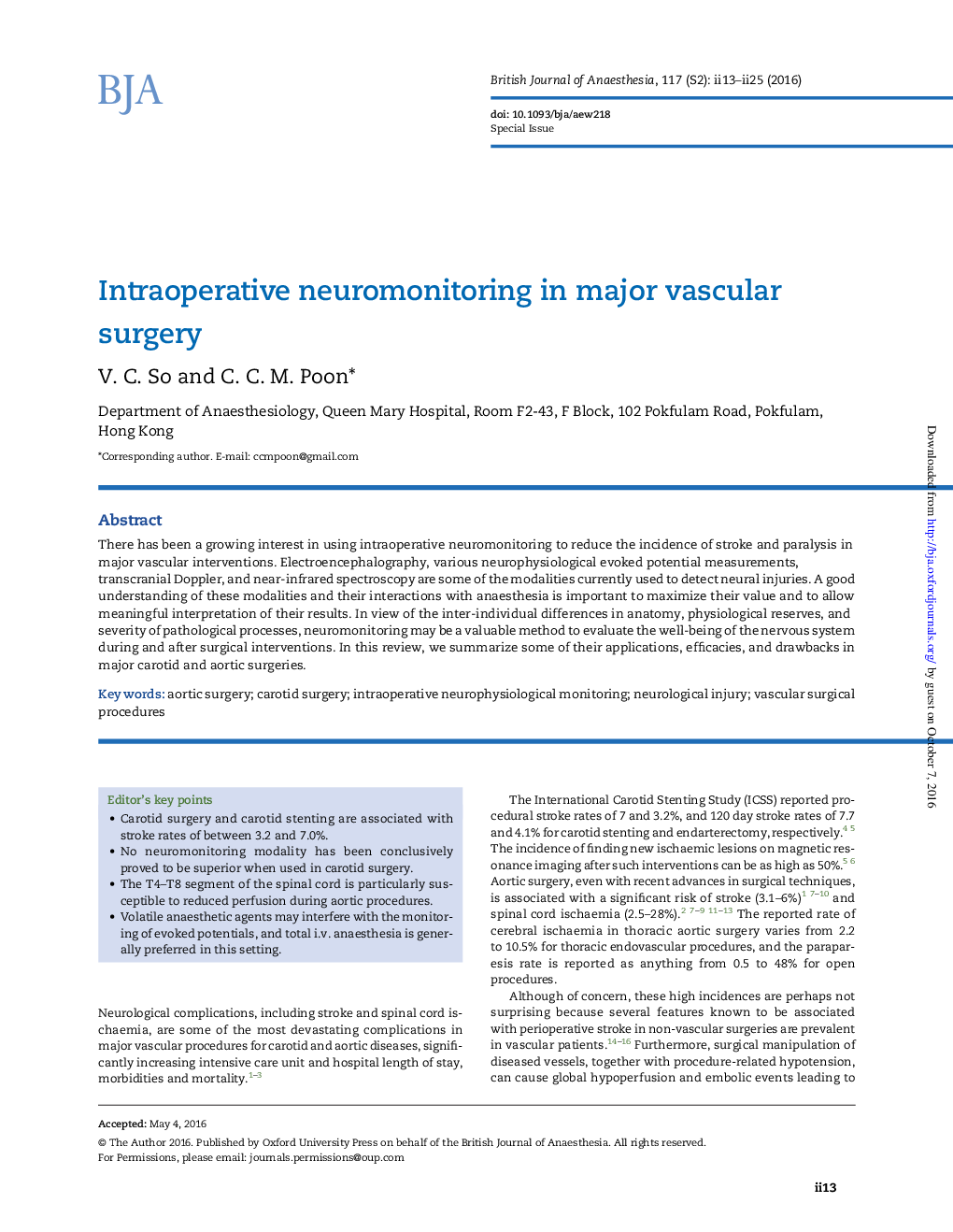| Article ID | Journal | Published Year | Pages | File Type |
|---|---|---|---|---|
| 8930811 | British Journal of Anaesthesia | 2016 | 13 Pages |
Abstract
There has been a growing interest in using intraoperative neuromonitoring to reduce the incidence of stroke and paralysis in major vascular interventions. Electroencephalography, various neurophysiological evoked potential measurements, transcranial Doppler, and near-infrared spectroscopy are some of the modalities currently used to detect neural injuries. A good understanding of these modalities and their interactions with anaesthesia is important to maximize their value and to allow meaningful interpretation of their results. In view of the inter-individual differences in anatomy, physiological reserves, and severity of pathological processes, neuromonitoring may be a valuable method to evaluate the well-being of the nervous system during and after surgical interventions. In this review, we summarize some of their applications, efficacies, and drawbacks in major carotid and aortic surgeries.
Keywords
Related Topics
Health Sciences
Medicine and Dentistry
Anesthesiology and Pain Medicine
Authors
V.C. So, C.C.M. Poon,
